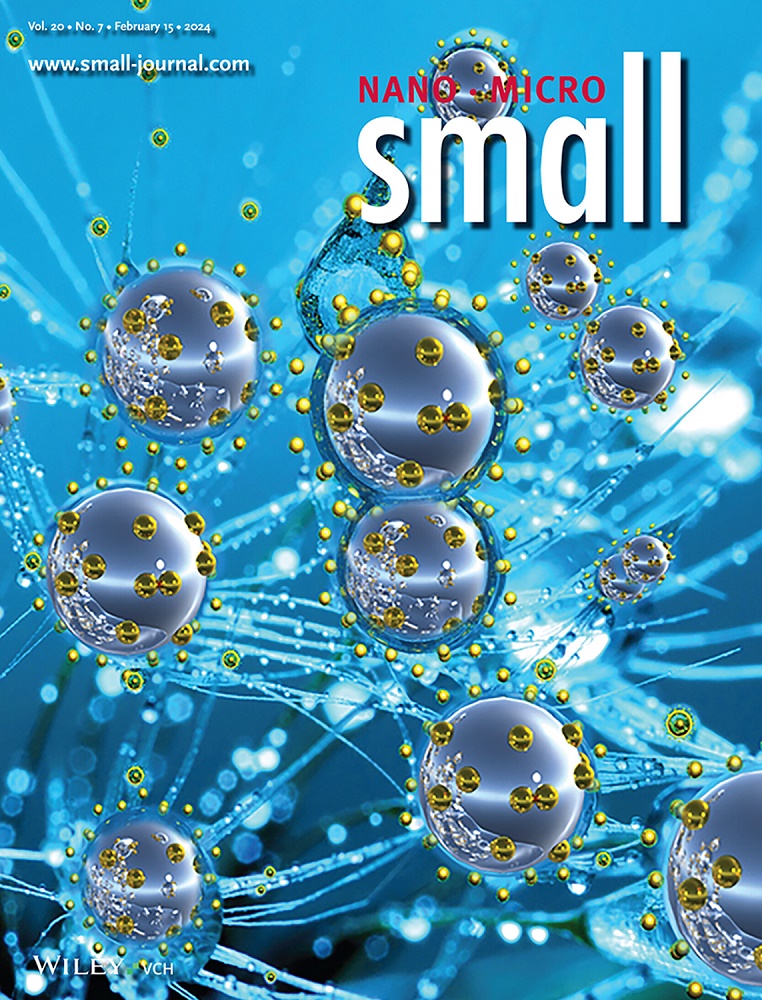热液沉积及AgSbS2太阳能电池效率接近19%的进一步模拟优化。
IF 12.1
2区 材料科学
Q1 CHEMISTRY, MULTIDISCIPLINARY
引用次数: 0
摘要
作为一种新兴的吸光材料,AgSbS2因其优异的水氧稳定性、环境良性元素组成和较高的吸收系数而备受关注。然而,由于缺乏合适的AgSbS2薄膜制备策略和系统的材料研究来改善其物理性能,目前报道的AgSbS2太阳能电池的最高功率转换效率(PCE)仅为2.25%。本文采用水热沉积法制备了晶粒尺寸大、表面形貌致密的AgSbS2薄膜。采用平面异质结器件结构,改善了电子层/吸光层之间的电接触和载流子输运,PCE为3.39%,是该材料的最高效率。为探索AgSbS2光伏器件的性能优化方向,对该器件进行了数值模拟。最后发现AgSbS2太阳能电池的PCE理论上可以达到18.99%,而结晶度和界面复合状态的改善是提高其效率的关键方法,为制备高质量AgSbS2薄膜和进一步提高PCE提供了参考。本文章由计算机程序翻译,如有差异,请以英文原文为准。
Hydrothermal Deposition and Further Simulative Optimization of Device Achieving Efficiency Close 19% for AgSbS2 Solar Cell.
As an emerging light-absorbing material, AgSbS2 attracts attention due to its excellent water and oxygen stability, environmental benign elemental composition, and high absorption coefficient. However, the reported highest power conversion efficiency (PCE) of AgSbS2 solar cell is only 2.25% due to the lack of suitable AgSbS2 thin film preparation strategy and systematic materials investigation toward improving the physical properties. Here a hydrothermal deposition method is developed for the fabrication of AgSbS2 films, which show large grain size and compact surface morphology. Planar heterojunction device structure is applied with improved electrical contact and carrier transport between the electron layer/light absorbing layer, which generates a PCE of 3.39%, representing the highest efficiency of this material. To explore the performance optimization direction of AgSbS2 photovoltaic devices, the device is numerically simulated. Finally, it is found that the PCE of AgSbS2 solar cells can reach 18.99% in theory, and the improvement of crystallinity and interface recombination state are the key methods to elevate its efficiency, which provides reference for the preparation of high-quality AgSbS2 film and further improvement of PCE.
求助全文
通过发布文献求助,成功后即可免费获取论文全文。
去求助
来源期刊

Small
工程技术-材料科学:综合
CiteScore
17.70
自引率
3.80%
发文量
1830
审稿时长
2.1 months
期刊介绍:
Small serves as an exceptional platform for both experimental and theoretical studies in fundamental and applied interdisciplinary research at the nano- and microscale. The journal offers a compelling mix of peer-reviewed Research Articles, Reviews, Perspectives, and Comments.
With a remarkable 2022 Journal Impact Factor of 13.3 (Journal Citation Reports from Clarivate Analytics, 2023), Small remains among the top multidisciplinary journals, covering a wide range of topics at the interface of materials science, chemistry, physics, engineering, medicine, and biology.
Small's readership includes biochemists, biologists, biomedical scientists, chemists, engineers, information technologists, materials scientists, physicists, and theoreticians alike.
 求助内容:
求助内容: 应助结果提醒方式:
应助结果提醒方式:


